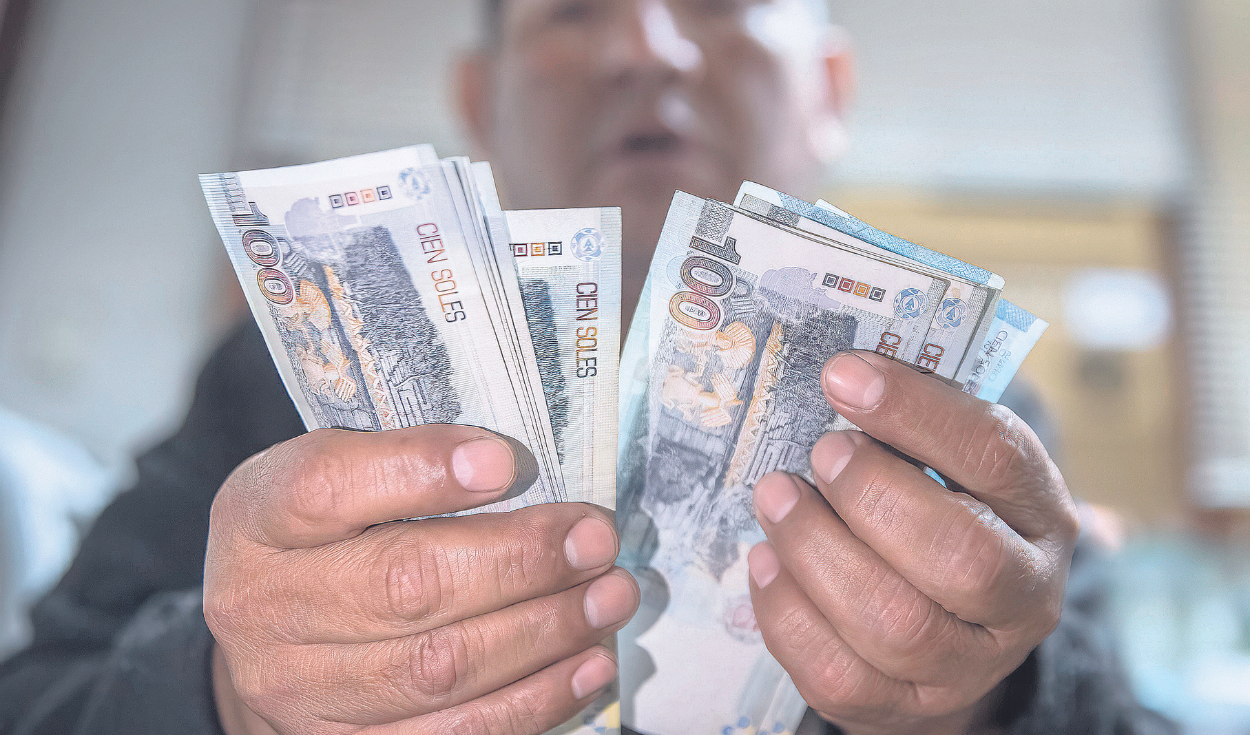
Lose them savings that they have in a financial institution would be a nightmare for anyone and, although a bankruptcy is not something that usually happens between banks, it has happened recently in savings banks and, soon, it could happen in cooperatives. For this reason, there is a Deposit Insurance Fund, which is updated every 3 months and whose process is automatic and free.
1. Deposit Insurance Fund: how much is it?
Jorge Carrillo, professor and finance expert at Pacífico Business School, explains that the SBS made its first update in the year of the maximum coverage amount of the Deposit Insurance Fund to S/122,420, for the period between March and May 2024.
In this way, the amount set by the supervisory entity in the previous quarter is reduced, which reached S/123,810 for the period between December 2023 and February 2024, that is, S/1,390 less.
Consequently, savings accounts, time deposits and Compensation for Time of Service (CTS) accounts that people have in banks, financial institutions, municipal savings and credit banks and rural savings and credit banks (does not apply to savings and credit cooperatives) continue to be protected above S/100,000 for almost 5 years (since June 2019).
2. Why is this fund important?
We must specify that The Deposit Insurance Fund allows the saver to recover their money (including all interest you have earned during the period in which you registered your savings) up to the maximum amount indicated. This means that, in the event of the possibility of bankruptcy of any of the insured financial entities, there will be support to honor existing commitments.
This is reflected, for example, in the last intervention to Root Boxwhen the S.B.S. It ordered its dissolution on Friday, August 11, 2023, and on Tuesday, August 15, 2023, the Fund began returning money to all savers, covering all of the savings of 96.3% of the entity’s clients. .
It is worth mentioning that This “insurance” is free for depositors, it is automatic (no prior registration required) and applies to each entity independently, that is, a person could have S/120,000 in a bank and S/120,000 in a savings bank, and would be covered by the Fund in both institutions.
3. Are cooperatives covered?
Savings and credit cooperatives (COOPAC) are not covered by the Deposit Insurance Fund. However, these entities have created their own “insurance”, called Cooperative Deposit Insurance Fund (FSDC)whose maximum coverage amount will be S/10,000, but which will only come into effect in mid-2024, according to Carrillo.
According to information from the Superintendency of Banking and Insurance and AFP (S.B.S.), in Peru there were around 434 registered cooperatives, but since the pre-pandemic to date more than 100 cooperatives have been intervened. Precisely, as of the publication of Law 30822 of 2019, the SBS sets a coverage amount to be able to protect savers, while reviewing their financial statements periodically, as with other financial entities in the system. .
4. What entities are covered by this Fund?
To the date, There are a total of 41 financial institutions that have an active Deposit Insurance Fund. Among them are 16 banks: BCP, BBVA, Scotiabank, Interbank, Falabella, Ripley, Mibanco, BanBif, Pichincha, GNB, Bancom, Alfin, Citibank, Santander, ICBC and Bank of China.
There are also 8 financial institutions: Crediscotia, Compartamos, Confianza, Oh!, Efectiva, Credinka, Proempresa and Qapaq; 12 municipal savings banks: Arequipa, Piura, Huancayo, Cusco, Sullana, Trujillo, Ica, Tacna, Maynas, Lima, Del Santa and Paita; 5 rural banks: Cencosud Scotia, Los Andes, Prymera, Del Centro and Incasur. If a new entity enters Peru, it will not have this coverage until it completes 24 months of contribution, as is currently the case with the BCI, which arrived in our country in mid-2022.
5. How do I collect the Fund in case of bankruptcy?
The process of recovering funds in a financial institution – any of the aforementioned – that has gone bankrupt is almost immediate, and at all times guided for clients by SBS itself.
“The insurance is automatic and free, I don’t have to register anywhereit has worked since I started saving,” highlights Carrillo.
After the bankruptcy, the S.B.S. will hold a contest to see which entity returns the money. For example, he explains that, with Caja Raíz, the BCP won. After determining who makes the payment, SBS publishes lists on its website and of the bankrupt entity: first those who have a salary account collect (since they live off that), then savings, etc.
At this time, the “paying” entities themselves can launch offers to savers to keep their funds with them.
Source: Larepublica
Alia is a professional author and journalist, working at 247 news agency. She writes on various topics from economy news to general interest pieces, providing readers with relevant and informative content. With years of experience, she brings a unique perspective and in-depth analysis to her work.











